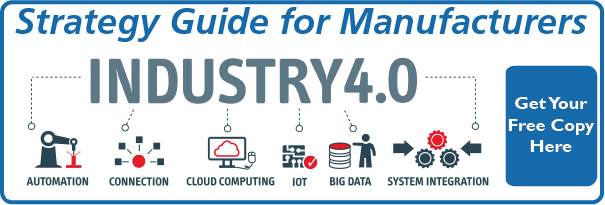
Manufacturing employment accelerates
Recently released employment numbers confirm what I hear from every owner of a manufacturing firm. It's getting increasingly hard to find great folks for advanced manufacturing jobs. With 31,000 new manufacturing jobs created in November (while manufacturing unemployment fell to an all time low of 2.6%1) we're pretty close to a zero sum market. In order for one company to gain a manufacturing worker, in many cases that means another will lose a worker.
The simple fixes have been tried. There are some creative policy programs being explored (like a new MA program which will use vocational schools during empty weekend periods for adult education in advanced manufacturing skills) and a number of trade associations have nurtured educational and retraining programs (like the National Association of Manufacturer's Manufacturing Institute.) There's some cool stuff happening in the public / private partnership space.
Some companies have tried hosting community events in conjunction with Manufacturing Day, and this WSJ article profiles the effort by some companies to recruit young workers by appealing to parents and selling a student debt-free skilled and well paid career in manufacturing.
These are all interesting approaches. And they're all big picture, aspirational programs. That doesn't mean they're not worthwhile - they are. But they contrast with an enormous opportunity that nearly every manufacturer overlooks - their readily available potential to market to the community. And this becomes increasingly important given the zero sum nature of the game. They need to recruit, hire AND retain workers while all nearby manufacturers will be competing against them, working to lure their talent away. They need to market to prospects and current employees and strengthen their bond with the latter simultaneously.
Market to the employee community
I often discuss the dissonance between the back end (operations & manufacturing process) and front end (community relations, revenue growth, PR, investors, etc.) of business. The former is rigorously managed while the latter is often much more casually approached.
This is a case in point. Why do companies only market to their prospects? And why do they emphasize their products and services? That's a rhetorical question - we all know the answer. Most manufacturers think of marketing as listing the features, benefits and technical details of their products and services. The more appropriate question might be why do they fail to market to other stakeholders including investors, lenders, community and employees? In fact, there should be tight integration between the industrial marketing and HR departments to facilitate recruiting and retention.
Some may argue that their target manufacturing employee prospect isn't online (and many incorrectly contend that their customer prospects aren't either.) We know that's absurd. Not only do they post job listings online (confirming what we all know) but I hear lots of stories about how bandwidth is maxed out during break and lunch periods in many factories as many mobile devices jam the network.
Companies miss an opportunity to tell the story of how they impact their community - and particularly telling it in an inspiring way that shows how they impact their customers' communities. Text, images, video and other tools can all be effective in marketing to workers, spouses, children, community college placement advisors, local politicians, community business groups, etc.
The story is key
For this to work, or course, they have to tell the right story - that's the one about how they make a difference in the world. That may sound superficially cheesy, but people want to be part of something that makes a difference. Helping in the community, and changing business and lives throughout the supply chain are much more compelling that simply cutting paychecks in exchange for time spent bending, stamping and welding.
This purpose driven approach won't appeal to everyone. That's OK. Some just want a job & paycheck. Of course in many cases, then, another job with a slightly larger paycheck will suit just as well. So this approach can also become a self-selecting criteria.
In order for this to work, however, it has to be CEO driven and requires a change in mindset. Companies that traditionally pitch their products/services (typical marketing leads the way, but often at the explicit direction of the CEO) will find this an extraordinarily awkward approach. They'll also probably stumble over silos between industrial marketing and HR. However, companies that can escape the echo chamber might even find that the HR marketing effort supports the sales & industrial marketing effort.
For instance, what if once a month a line worker accompanied a sales rep on a business trip to customer facilities where they'd see their product in action and interact with workers there. Interviewing them on film, capturing the traveling worker's impressions and having them tell the story to their colleagues and prospects in writing, with Instagram images of the product in action in a customer's facility, and a video vignette could be the basis for a well optimized campaign that supports both objectives. Similarly when a customer visits your facility, have a line worker participate in the meeting, and have them share the experience internally.
Create stylized galleries of images of work on the floor. Use them on image platforms like Instagram and Facebook. Create celebrities of your workers, and turn them into evangelists. Send them to job fairs in place of, or alongside HR people.
Even think about how you might replicate the success HubSpot has had with its culture code which has generated huge employment and PR buzz. Of course a typical manufacturing environment will have a very different culture code - that's fine. The point is to articulate one, live it, and use it to appeal to those who'd fit and value the opportunity to be part of that community.
Losing orders for money
There's an interesting parallel you might not have noticed. Many companies claim they lose customer orders on price, and employees on pay. These are different sides of the same coin!
If your chitter chatter is shallow and self centered, or if your pitter patter doesn't match, then the only tools people can use to gauge your fit is price (including benefits) and related factors (warranty or commute length.)
And as the saying goes people don't quit companies, but rather they quit bosses.
In both cases the answer is to really understand why people buy your product, service, culture, etc. If you keep telling them why you're good you completely miss the chance to share why you're the right fit for their goals.
Finally, don't forget the veteran community
Hiring more veterans can support this approach. Particularly among front-line combat arms troops one finds a culture of shared sacrifice and camaraderie. That makes it easier to tell and share the stories, and reaches a new community with the information - a community which is often more mature and less prone to the hassles which give line supervisors gray hairs.
Rather than sitting in an AC office while line workers face 100 deg temps, veteran co-workers and managers tend to share burdens and work together for mutual success.
Interested in fostering a veteran community in your business? This video from USAA talks a bit about how to start that effort.
Industrial Marketing matters
There's a common thread here - industrial marketing. And that's perhaps the biggest hurdle. Many manufacturers think of marketing as their trade show budget and a bit of print advertising. Just as they may not even consider marketing to customers, they probably don't think of marketing to employment prospects, current workers and their families, and the community.
CEOs need to fundamentally rethink their revenue growth staffing and resource allocation and develop models that support buyer behaviors. As they do that, there's an easy opportunity to include programs to appeal to prospective and current employees - the same core technology and content approach are central to both.
In a world with fast moving, competing priorities this is a rare twofer - an opportunity to impact two critical areas with a single industrial marketing initiative. Companies will reach more prospects, earlier in their buying journeys. They'll also reach more potential employees. And they'll nurture loyalty and retain both customers and workers if they build a program on solid strategy and consistent execution. Want to talk about how to build a program like this to support workforce strength, domestic revenue growth and even export sales? Let's talk.
1 - https://www.businessinsider.com/us-jobs-report-november-2017-12

